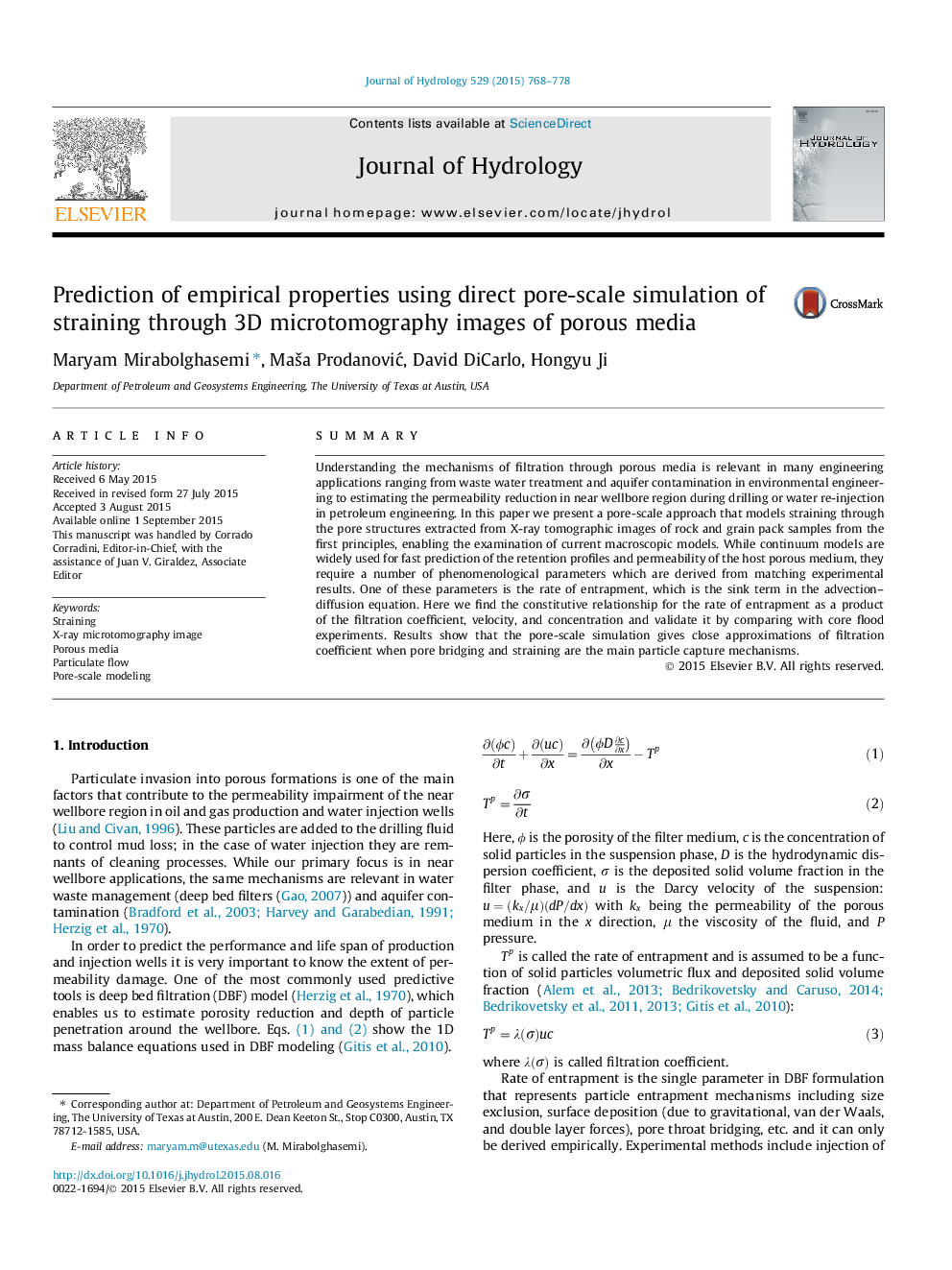| Article ID | Journal | Published Year | Pages | File Type |
|---|---|---|---|---|
| 6410697 | Journal of Hydrology | 2015 | 11 Pages |
â¢Straining was modeled via a direct pore-scale particulate flow model.â¢Flow domains were extracted from micro-CT images of porous samples.â¢Filtration coefficients were calculated and validated against experiments.
SummaryUnderstanding the mechanisms of filtration through porous media is relevant in many engineering applications ranging from waste water treatment and aquifer contamination in environmental engineering to estimating the permeability reduction in near wellbore region during drilling or water re-injection in petroleum engineering. In this paper we present a pore-scale approach that models straining through the pore structures extracted from X-ray tomographic images of rock and grain pack samples from the first principles, enabling the examination of current macroscopic models. While continuum models are widely used for fast prediction of the retention profiles and permeability of the host porous medium, they require a number of phenomenological parameters which are derived from matching experimental results. One of these parameters is the rate of entrapment, which is the sink term in the advection-diffusion equation. Here we find the constitutive relationship for the rate of entrapment as a product of the filtration coefficient, velocity, and concentration and validate it by comparing with core flood experiments. Results show that the pore-scale simulation gives close approximations of filtration coefficient when pore bridging and straining are the main particle capture mechanisms.
